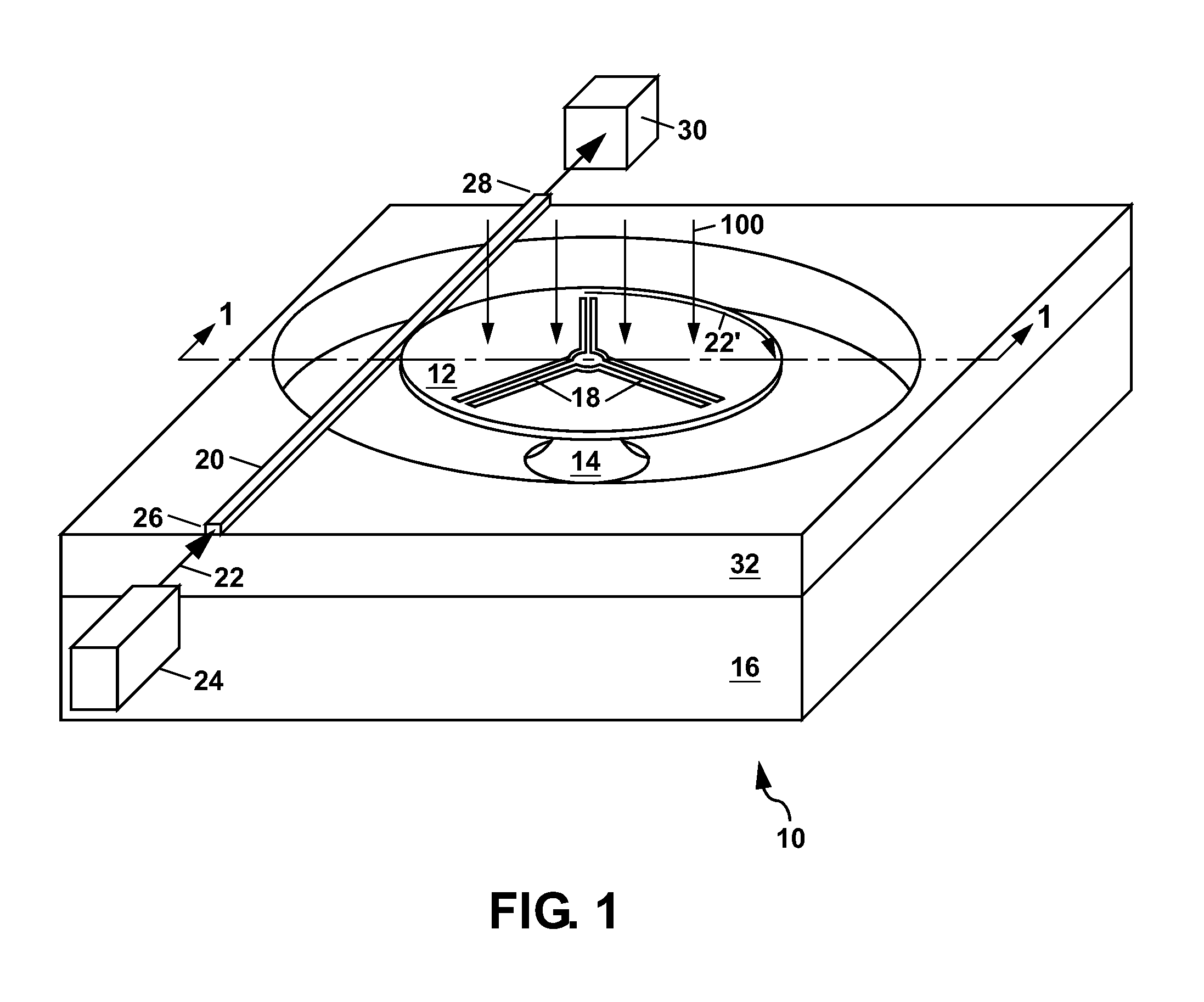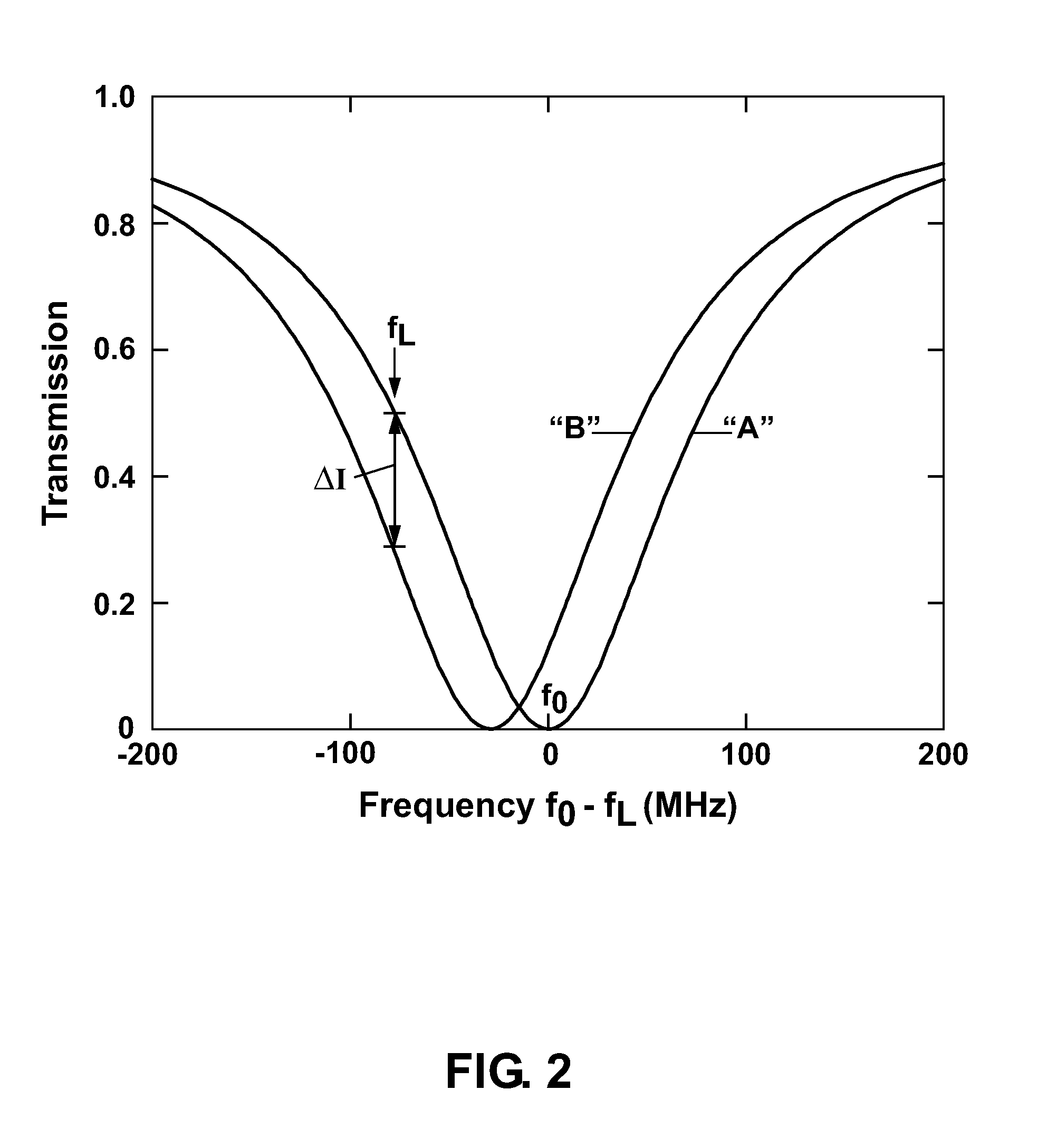Thermal microphotonic sensor and sensor array
- Summary
- Abstract
- Description
- Claims
- Application Information
AI Technical Summary
Benefits of technology
Problems solved by technology
Method used
Image
Examples
Embodiment Construction
[0040]Referring to FIG. 1, there is shown a schematic perspective view of a first example of a thermal microphotonic sensor 10 of the present invention. The apparatus 10 comprises an optical resonator 12 (also referred to as an optical cavity, a microcavity, or a microring resonator). The optical resonator 12 is suspended on a support post 14 above a substrate 16 by a plurality of tethers 18 which are connected between the optical resonator 12 and the support post 14. An optical waveguide 20 is located near a periphery of the optical resonator 12 to allow an evanescent coupling of light 22 between the optical waveguide 20 and the optical resonator 12.
[0041]The light 22 can be provided by a laser 24 which can be, for example, a single-frequency semiconductor laser such as a distributed Bragg reflector (DBR) laser operating at a wavelength of about 1.5 microns (μm). The light 22 from the laser 24 can be coupled into the optical waveguide 20 at an input end 26 thereof and is transmitte...
PUM
 Login to View More
Login to View More Abstract
Description
Claims
Application Information
 Login to View More
Login to View More - R&D
- Intellectual Property
- Life Sciences
- Materials
- Tech Scout
- Unparalleled Data Quality
- Higher Quality Content
- 60% Fewer Hallucinations
Browse by: Latest US Patents, China's latest patents, Technical Efficacy Thesaurus, Application Domain, Technology Topic, Popular Technical Reports.
© 2025 PatSnap. All rights reserved.Legal|Privacy policy|Modern Slavery Act Transparency Statement|Sitemap|About US| Contact US: help@patsnap.com



